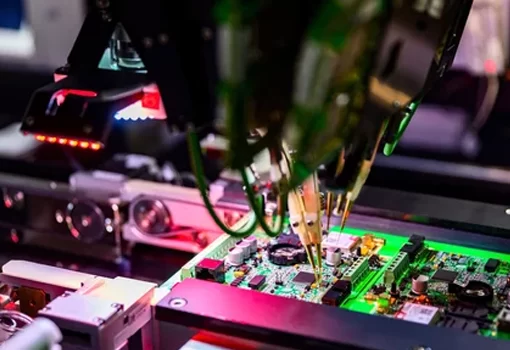As perceived by many, the world is increasingly becoming a dangerous place to live. This perception is due to the potential hazards such as terrorism, organized crime, and theft. As a result, physical security has grown to become the most significant issue in recent years. Traditional physical security techniques include security guards, locks, spotlights, physical barriers, and video surveillance. The advent of Internet of Things (IoT) is likely to enhance the effectiveness of these traditional physical security systems. With sensors being the building block of any security system, the demand is expected to witness considerable uptake. Convergence of technologies such as biometric, RFID, cloud computing, and Big Data is another factor augmenting the growth of sensors in the physical security industry.
The security industry encompasses products ranging from fire and burglar alarms through electronic access control and biometrics to guard equipment and security fencing. That said, ubiquitous connectivity is expected to result in a new breed of connectivity-enabled solutions, including new product applications, business models, technologies, and platforms and services.
Advancements in Sensors Driving Adoption
The growing significance of IoT is increasingly contributing to the rapidly evolving security requirements. This is expected to considerably drive the need for sensors and innovation around sensor technology. Advancements in sensor technology have resulted in size reduction that not only result in compact structure of the products but also provide better performance, higher sensitivity, and better connectivity with the entire system. Emphasis on R&D has been high within the sensor ecosystem. Growing sophistication and economic viability of sensors is an additional factor driving their adoption in the physical security industry. Newer technologies and innovations are expected to drive market for sensors across applications. For example, it is expected that nano sensors will dominate the security landscape by 2025.
Biometric & RFID – The Future of Security
Exponential increase in connected devices is a key macroeconomic factor driving the demand for biometric security across applications. Introduction of fingerprint sensor in Apple and Samsung’s smartphones has resulted in enhancing customer confidence in biometric usage. Biometric technologies have grown to become a popular choice in access control applications with technology advancements expected to result in both convenience and cost savings for the end user. Commercial use of biometric recognition is still nascent in major verticals such as hospitality, healthcare, and finance that are expected to drive demand for biometric recognition over the long term as pricing of biometric modalities declines.
Moreover, another technology that helps in improving security is RFID. Shrinkage cost retailers nearly $50 billion in 2016, with shoplifting and employee theft being primary reasons. Shrinkage prevention through efficient inventory management is among the top reasons retailers prefer to use RFID technology. Tagging every individual asset at the source enables complete visibility across the supply chain. Moreover, this enables tracking assets real time within a retail store or warehouse, thereby preventing loss.
Opportunities Across Residential and Commercial Electronic Security
Security and defence continues to dominate the market for sensors used for security and surveillance, with perimeter protection and intrusion detection being key application areas. However, emergence of mega cities coupled with IoT is paving way for newer sensors applications.
Urbanization is constantly witnessing growth, thereby resulting in the development of smart cities. The evolution of smart cities means greater emphasis on technology to address the growing security challenges. Government funding toward infrastructure and IoT/Connected Homes initiatives is expected to drive growth opportunities for sensors. People have high interest in home security in terms of its perceived benefit with CCTV and smart locks, which are expected to be in demand in the near future. In multitenant office or residential buildings, customers prefer to deploy integrated solutions as they connect to other facets of the building such as energy management and fire and safety.
Violent incidents in universities and schools in the US have reinforced the need for security systems in institutions. Several sensors can be deployed for applications such as fire and safety, intruder detection, perimeter security, and access control. Institutions deploy several types of security and surveillance systems such as surveillance cameras, gunshot detection systems, location tracking systems, and unmanned aerial vehicles. Sound sensors triggering nearby cameras are used in gunshot detection systems, whereas RFID sensors are used in location systems to track students and school buses.
Conclusion
The IoT is here to stay. Changing business landscapes is increasingly becoming common with new value chain partnerships and product innovations. Companies need to focus on developing products that are proactive and technologies that are cognitive. Technologies in the previous decade were more intuitive; however, in the current decade, they are expected to shift toward being more cognitive. With the development of new technologies, new materials, smaller form factors, and easy integration into smart devices providing the necessary security in an IoT environment, the market for sensors is poised for considerable growth in the coming years.




